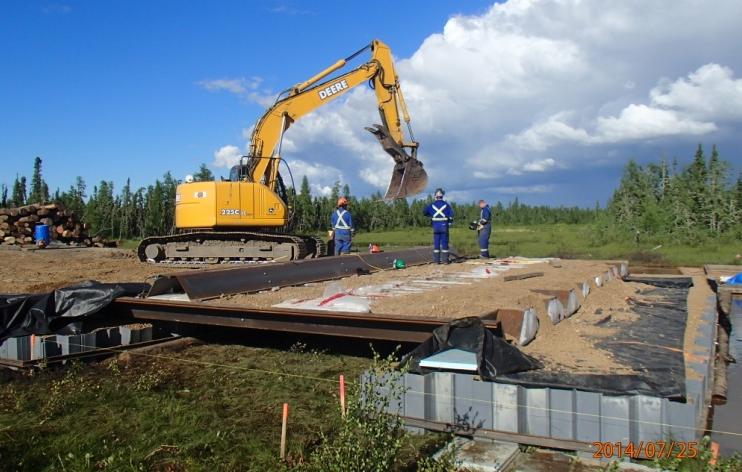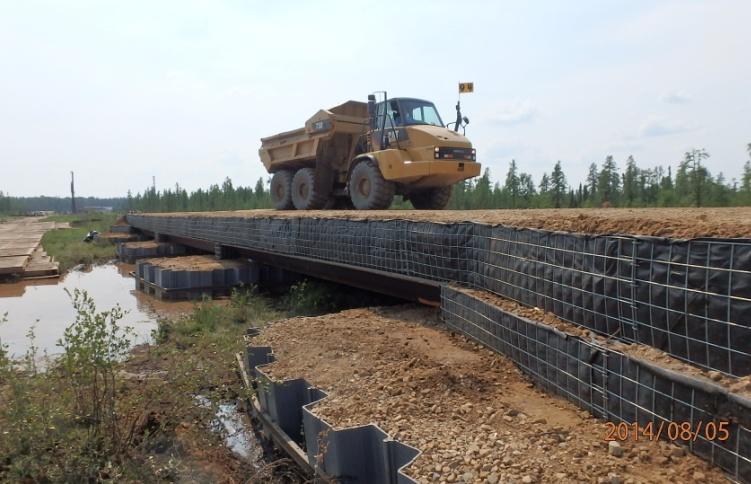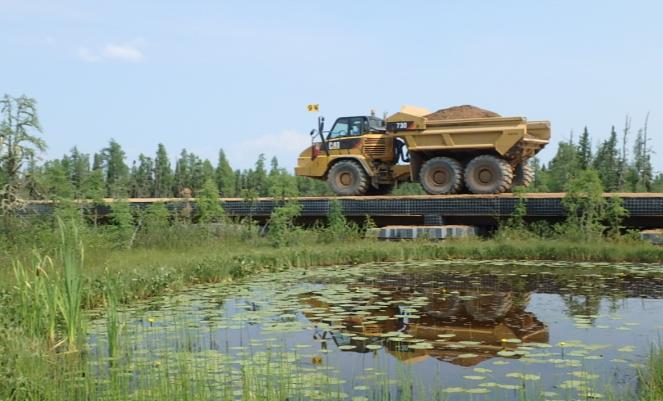
Pile Supported Jump Span Bridge
Challenge – Deep muskeg conditions are common in many areas of Alberta, limiting the use of conventional road and bridge construction techniques. Road locations crossing open water require innovative, environmentally responsible solutions.
Solution – Landmark was retained to construct a section of road thru the muskeg. Due to the high water table and organic soil types, an innovative design was required. The solution included single heading construction of two piers linked by steel sheet pile bridges to the plastic sheet pile contained abutments. This design minimizes the impact on wetlands by maintaining natural water flow and is a practical strategy to align with the Alberta Wetland Mitigation Directive.
Specs –
- Design load: CL 800
- Road width: 11.0 meters (9.5 m within Jersey barriers)
- Distance between piers: 6.0 m
- Pier dimension: 14 m x 3 m
- Pile depth: 10+ m (33-40′)
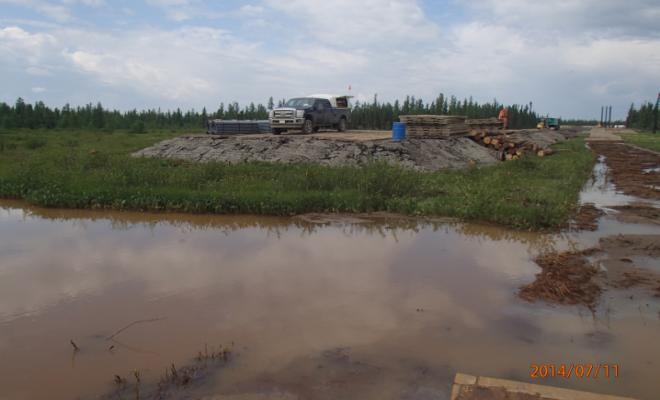

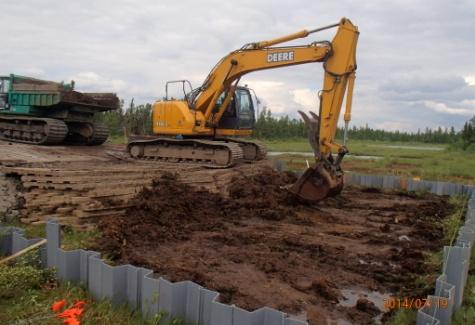
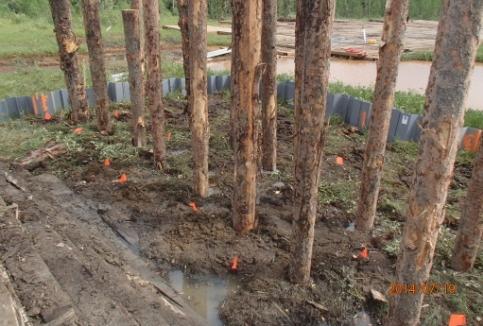

Plastic sheet piles are driven to define the perimeter of the bridge abutment. Log piles are driven to their full depth according to an engineered pattern using a side-grip vibro-hammer. The piles are capped with access mats, geotextile fabric and gravel to provide the bearing strength for the footing.
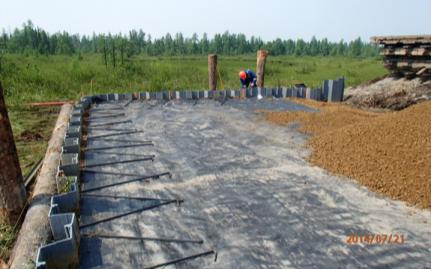
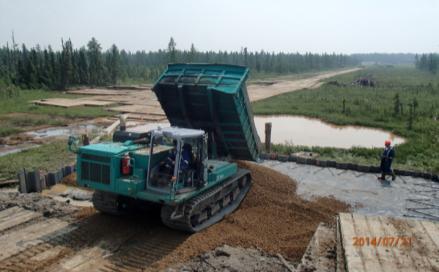
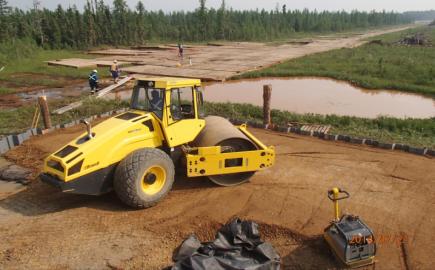
Plastic walls are anchored with tie-backs and reinforced with additional timber piles prior to compaction. The track dump, skid steer and compactors prepare the footing for the horizontally installed sheet pile bridge structure.

Benefits –
- Maintains Environmental Function of Wetland
- Aligned with the Alberta Wetland Mitigation Directive
- Safe Passage for Aquatic Wildlife
- Improved Road Safety with All-season Access
- Low Maintenance
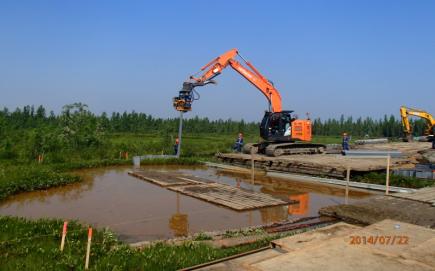
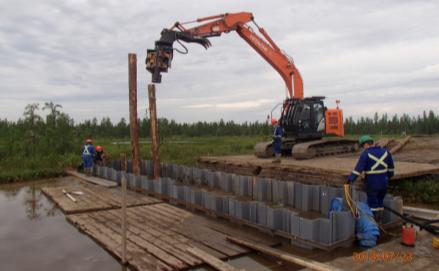
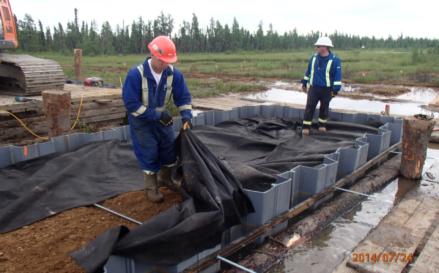
Access mats are used as a platform for the excavator to construct the first pier. The construction process is repeated using plastic sheet piling, wooden piles, fabric and compacted gravel. Steel ready rod is used in combination with steel channel to ensure the pier retains its shape.
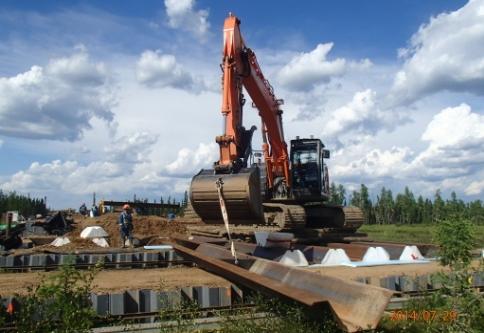
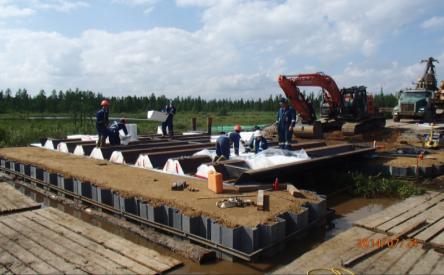
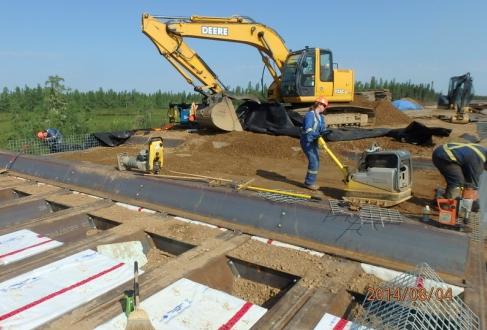
Following compaction, steel sheet piling is used to span the gap. Custom fit construction foam, used as lightweight fill, also spreads the end bearing load of the the sheet pile bridge. Steel cross-members tie the structure together prior to being capped with compacted gravel. Once the second pier and the terminal abutment have been constructed, GRS forms are used to prevent lateral movement of soil as the fill depth is established.
